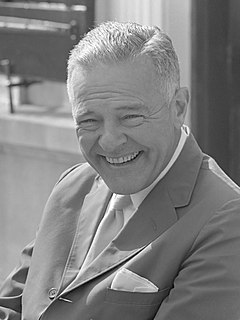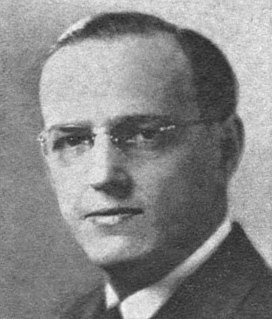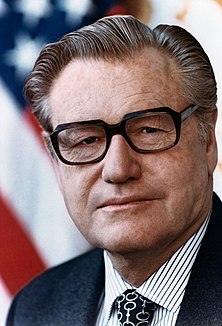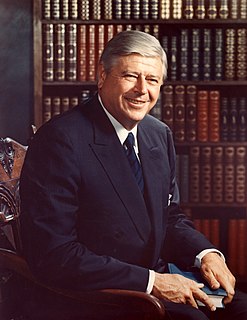
Rogers Clark Ballard Morton was an American politician who served as the U.S. Secretary of the Interior and Secretary of Commerce during the administrations of Presidents Richard M. Nixon and Gerald R. Ford, Jr., respectively. He also served as a member of the U.S. House of Representatives from Maryland.

Thruston Ballard Morton, was an American politician. A Republican, Morton represented Kentucky in the U.S. House of Representatives and the U.S. Senate.
The 1964 National Convention of the Republican Party of the United States took place in the Cow Palace, Daly City, California, on July 13 to July 16, 1964. Before 1964, there had been only one national Republican convention on the West Coast, the 1956 Republican National Convention, which also took place in the Cow Palace. Many believed that a convention at San Francisco indicated the rising power of the Republican party in the west.

The 1968 National Convention of the Republican Party of the United States was held at the Miami Beach Convention Center in Miami Beach, Dade County, Florida, from August 5 to August 8, 1968, to select the party's nominee in the general election. It nominated former Vice President Richard M. Nixon for President and Maryland Governor Spiro T. Agnew for Vice President. It was the fourth time Nixon had been nominated on the Republican ticket as either its vice-presidential or presidential candidate (1960).

The 1980 National Convention of the Republican Party of the United States convened at Joe Louis Arena in Detroit, Michigan, from July 14 to July 17, 1980. The Republican National Convention nominated former Governor Ronald W. Reagan of California for President and former Representative George H. W. Bush of Texas for Vice President. Reagan, running on the theme "Let's Make America Great Again," stayed at the Detroit Plaza Hotel in the Renaissance Center, at the time the world's tallest hotel, and delivered his acceptance speech at Joe Louis Arena. It remains the only major party national political convention to have been held in Detroit.
The 1835 Democratic National Convention was a presidential nominating convention that was held from May 20 to May 22, 1835, in Baltimore, Maryland. This was the second national convention of the Democratic Party of the United States. The delegates nominated Vice President Martin Van Buren for President and Representative Richard Mentor Johnson of Kentucky for Vice President.

The 1960 United States presidential election in Massachusetts took place on November 8, 1960, as part of the 1960 United States presidential election, which was held throughout all 50 states. Voters chose 16 representatives, or electors to the Electoral College, who voted for president and vice president.
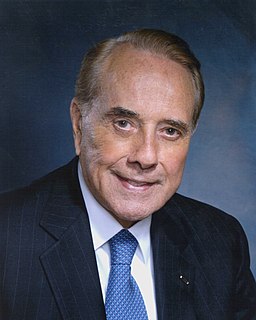
This article lists those who were potential candidates for the Republican nomination for Vice President of the United States in the 1976 election. At the 1976 Republican National Convention, incumbent President Gerald Ford narrowly won the presidential nomination over former California Governor Ronald Reagan. Ford had decided not to pick Vice President Nelson Rockefeller as his running mate, due to Rockefeller's unpopularity with the right wing of the Republican Party. Ford chose Kansas Senator Bob Dole as his running mate, instead. Dole was acceptable to the conservative wing of the party, and Ford hoped that Dole would help the ticket win the western states and the agricultural vote. The Ford-Dole ticket lost the general election to the Carter-Mondale ticket. Though he did not win the nomination, Reagan announced before the convention that he would pick Senator Richard Schweiker of Pennsylvania as his running mate.
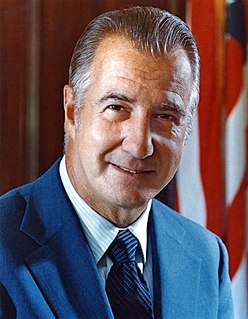
This article lists those who were potential candidates for the Republican nomination for Vice President of the United States in the 1968 election. After winning the Republican presidential nomination at the 1968 Republican National Convention, former Vice President Richard Nixon convened a series of meetings with close advisers and party leaders such as Strom Thurmond in order to choose his running mate. Nixon ultimately asked the convention to nominate Maryland Governor Spiro Agnew as his running mate. By a large margin, Agnew won the vice presidential nomination on the first ballot over Michigan Governor George W. Romney, who was supported by a faction of liberal Republicans. Nixon chose Agnew because he wanted a centrist who was broadly acceptable to the party, had experience with domestic issues, and appealed to Southern voters. The Nixon-Agnew ticket defeated the Humphrey-Muskie ticket, and also won re-election in 1972, defeating the McGovern-Shriver ticket. However, Agnew was forced to resign as Vice President in 1973 due to a controversy regarding his personal taxes.

This article lists those who were potential candidates for the Republican nomination for Vice President of the United States in the 1952 election. After defeating Ohio Senator Robert A. Taft for the Republican presidential nomination at the 1952 Republican National Convention, General Dwight D. Eisenhower needed to choose a running mate. Taft recommended Illinois Senator Everett Dirksen, but Eisenhower rejected the suggestion. Eisenhower and his advisers put together a list of prominent Republicans who were acceptable to both the conservative Taft and liberal Dewey wings of the party, anti-Communist, talented at campaigning, relatively young, and who contributed to Eisenhower's nomination victory. After conferring with Republican Party leaders, Eisenhower decided to ask California Senator Richard Nixon to be his running mate; Nixon accepted the offer. Nixon had carefully campaigned for the post of vice president since meeting Eisenhower in 1951, and Nixon helped deliver the California delegation to Eisenhower in the presidential ballot. The Republican convention ratified Eisenhower's choice of Nixon. Months after the convention, Eisenhower considered asking Nixon to step down as running mate due to controversy surrounding campaign expenses, but Nixon rallied public opinion with his Checkers speech and remained on the ticket. The Eisenhower-Nixon ticket won the 1952 election, as well as the 1956 election, defeating the Stevenson-Sparkman and Stevenson-Kefauver tickets, respectively.

The 1960 United States presidential election in Connecticut took place on November 8, 1960, as part of the 1960 United States presidential election, which was held throughout all 50 states. Voters chose eight representatives, or electors to the Electoral College, who voted for president and vice president.

The 1960 United States presidential election in Rhode Island took place on November 8, 1960, as part of the 1960 United States presidential election, which was held throughout all 50 states. Voters chose four representatives, or electors to the Electoral College, who voted for president and vice president.
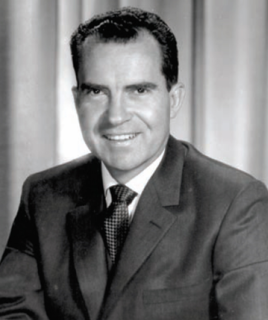
The 1960 United States presidential election in Kentucky took place on November 8, 1960, as part of the 1960 United States presidential election. Kentucky voters chose ten representatives, or electors, to the Electoral College, who voted for president and vice president.

The 1960 United States presidential election in Nebraska took place on November 8, 1960, as part of the 1960 United States presidential election. Nebraska voters chose six representatives, or electors, to the Electoral College, who voted for president and vice president.

The 1960 United States presidential election in South Dakota took place on November 8, 1960, as part of the 1960 United States presidential election. South Dakota voters chose four representatives, or electors, to the Electoral College, who voted for president and vice president.

The 1960 United States presidential election in Washington took place on November 8, 1960, as part of the 1960 United States presidential election. Washington voters chose nine representatives, or electors, to the Electoral College, who voted for president and vice president.

The 1960 United States presidential election in Arkansas took place on November 8, 1960, as part of the 1960 United States presidential election. Arkansas voters chose eight representatives, or electors, to the Electoral College, who voted for president and vice president.

The 1960 United States presidential election in Louisiana took place on November 8, 1960, as part of the 1960 United States presidential election. Louisiana voters chose ten representatives, or electors, to the Electoral College, who voted for president and vice president.



